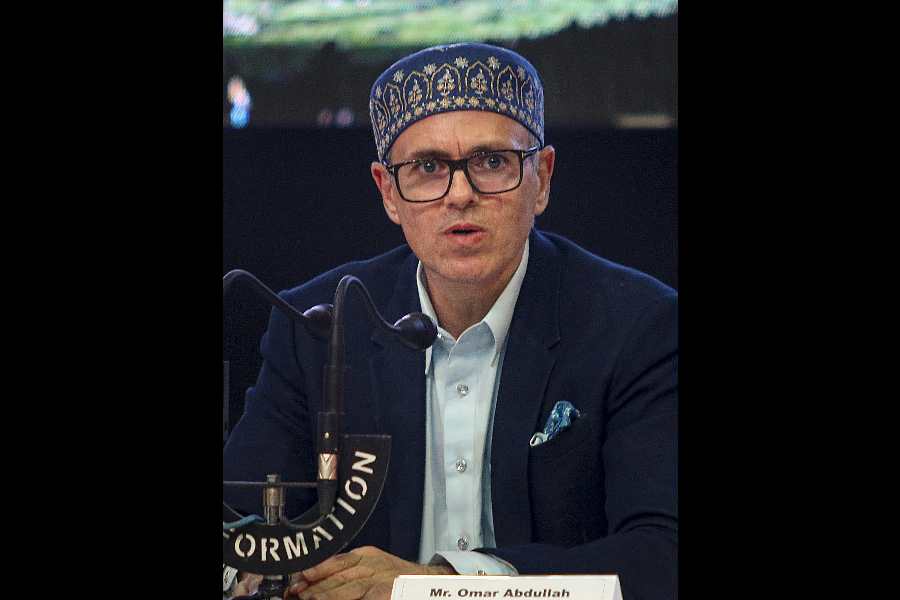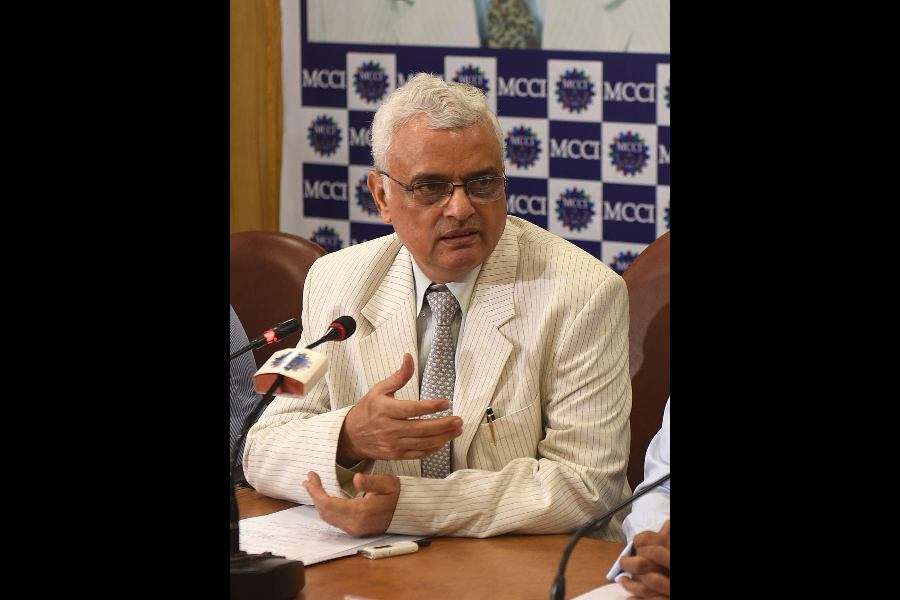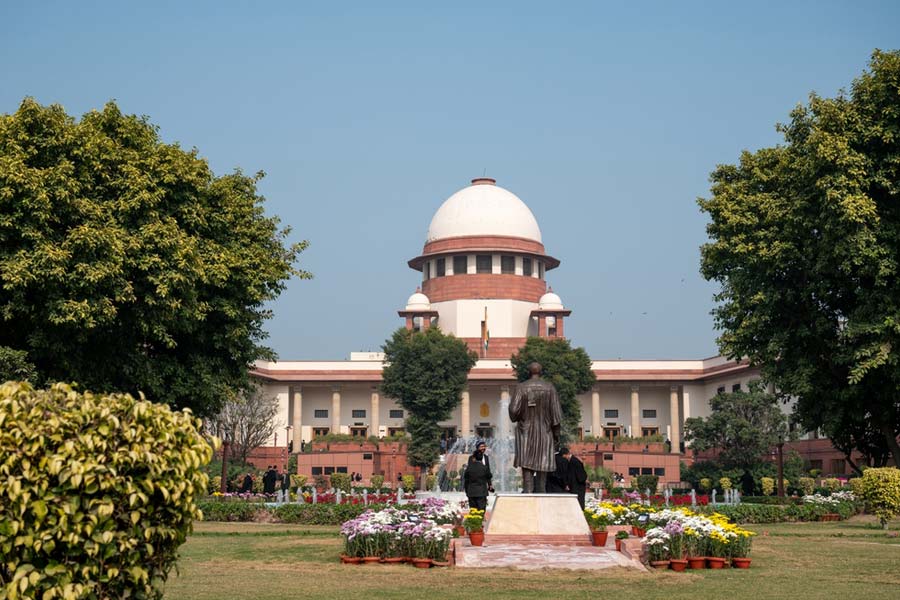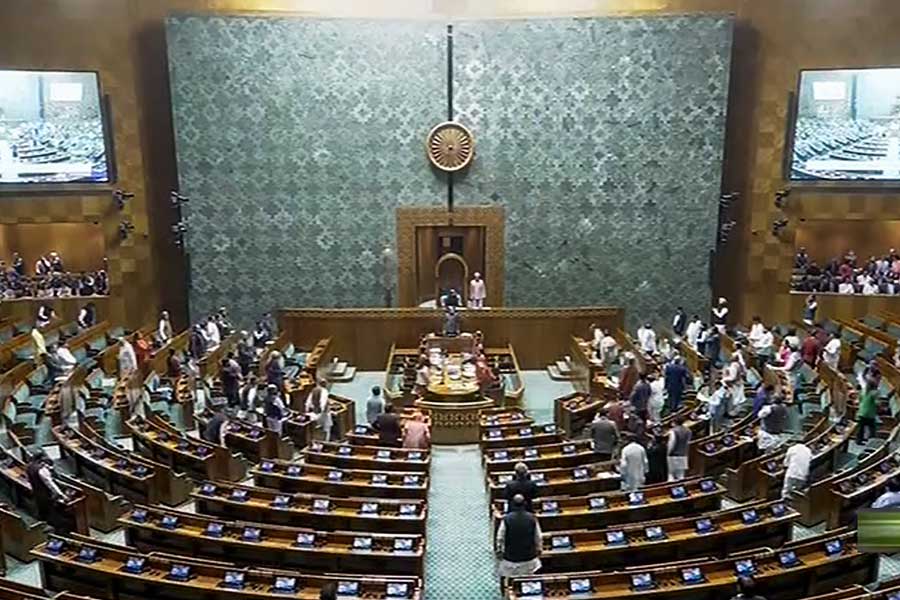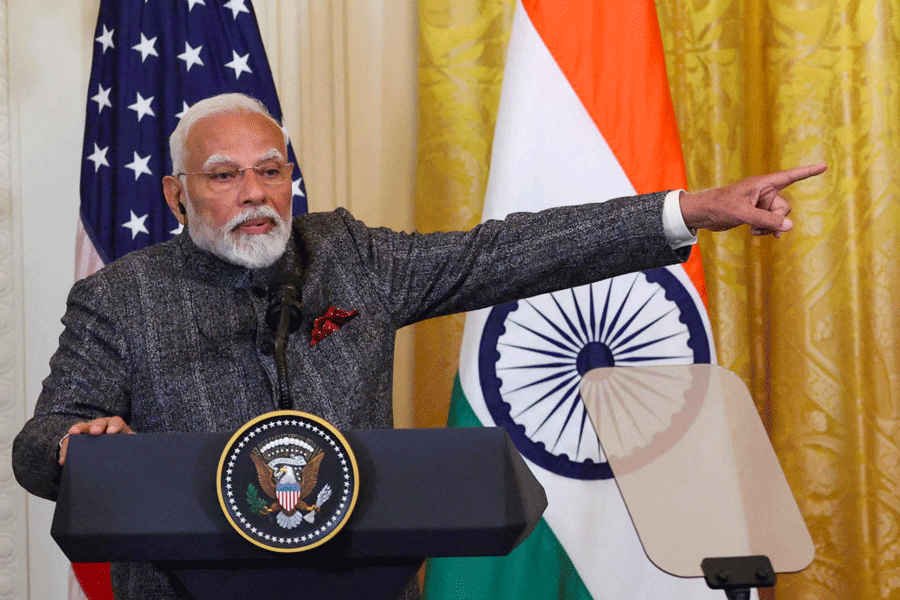 |
Alok Chatterjee, who works at the US National Aeronautics and Space Administration’s (Nasa) Jet Propulsion Laboratory in Pasadena, California, played a key role in India’s Chandrayaan-1 mission. Chatterjee -- who started his career with the Indian Space Research Organisation (Isro) and had worked under APJ Abdul Kalam — is now leading the Isro-Nasa collaboration. He was also a part of Nasa’s Curiosity mission and the upcoming Mars 2020 mission, which intends to look for signs of life on the red planet. Chatterjee was in India to lead negotiations on a new project being undertaken by Isro and Nasa. He spoke to Prasun Chaudhuri while on a visit to Calcutta. Excerpts:
What will be the next joint venture by Nasa and Isro?
After the success of Chandrayaan-1, the two organisations are coming together to launch DESDynI-- Deformation, Ecosystem Structure and Dynamics of Ice — meant to study long-term changes in the Earth’s climate. This will help monitor the Earth’s surface deformation and forecast earthquakes, volcanic eruptions, and landslides. It will also predict the response of ice sheets to climate change and the impact on the sea level. The payload will have two powerful radars—L and S Band synthetic aperture radars (SAR) — to track the Earth’s surface from space. It will be the world’s first free flying dual frequency platform that will measure global changes in the Earth system and improve the use of natural resources and disaster management. It’s not a spy satellite. Nor does it have any military purpose as surmised by some recent news reports.
Will Nasa put the payload (the radars) in an Indian satellite and rocket, just like it did in Chandrayaan-1? When will it be launched?
This time we are going for a broader collaboration. Unlike Chandrayaan 1—in which several countries provided their small payloads — only the US and India are involved. Each country will split the cost in equal proportions and jointly develop the sophisticated payload. NASA will provide the L-band SAR and Isro will contribute its S-Band SAR as part of the combined payload which will use some common interfaces. This joint payload will then be integrated on an Indian satellite in Bangalore with Nasa contributions and launched on an Indian rocket (GSLV) from Sriharikota. The data will be shared by both the countries.
As this mission involves considerable commitment by India, it is going through an elaborate approval process by different government agencies. We are told that the Space Commission, the Planning Commission, Ministries of Finance and External Affairs have completed the approval process. It has been two years since we started negotiating the technical agreements. It is now with the Indian Prime Minister’s Office (PMO) and we have been told that approval is imminent by the Cabinet Committee on Security Affairs. We are expecting to formally start working on the project by November 2013. If all goes well DESDynI (not the final name) will be in space by 2019-2020.
But the GSLV rocket hasn’t met with much success. Isn’t the tried and tested PSLV the better option?
We tried hard to accommodate the DESDynI mission on the well-proven PSLV rocket but it's too big and heavy. It needs a powerful rocket like the GSLV. It’s true that GSLV launches have failed in the recent past but we fervently hope that the next launch of the GSLV will be a success. The cryogenic upper stage of the GSLV rocket has been a problem, ever since the Russians withdrew abruptly from the collaboration. Isro had to indigenously develop this stage, which is essential for enhancing the capability of rockets to haul heavy payloads into orbit. Apparently, a successful GSLV launch is now a top priority for Isro. Its Chandrayaan-2 mission, slated for a 2015 launch, too is banking on GSLV.
Nasa’s moon mineralogy mapper (M3) in Chandrayaan-1 seems to have thrown up excellent results.
Yes. M3 provided the first mineralogical map of the lunar surface and discovered water molecules on the surface of the moon. Later, using data collected by M3 and other recent Moon missions, Nasa confirmed magmatic water or water locked under the surface of the Moon. The findings represent the first remote detection of this form of water that originates from deep within the Moon’s interior. Earlier studies had shown the existence of magmatic water in lunar samples collected during Nasa’s Apollo missions.
But Chandrayaan-1 operated for just 312 days, as opposed to the intended two years.
Yes, it was expected to last two years. The thermal control system of the spacecraft gave in to the thermal environment of the lunar surface, something that the Isro scientists had not foreseen. I think the two-year time frame was too ambitious given that Isro was launching a deep space mission for the first time. However, the Chandrayaan-1 mission had achieved more than 80 per cent of its primary science objectives by the time it was abandoned.
 |
What is the future of Nasa-Isro collaboration? Is Nasa helping India in its Mars mission Mangalyaan?
Potential future collaboration opportunities are quite significant provided the two governments carry out the objectives of the joint strategic partnership of which space science collaboration is a significant part. Just as it was for the Chandrayaan-1 mission, Nasa is providing the critical communication and navigation support for the Mangalyaan mission at Isro’s request. There are plans for such support for the Chandrayaan-2 mission too. Nasa administrator Charles Bolden in his recent visit to India clearly indicated that Nasa is keen on future collaborations with Isro, particularly on the asteroid mission. I am sure Nasa would be interested in Isro sharing its science data from future missions such as Mangalyaan, Astrosat, Oceansat, Chandrayaan-2 and others.
How did you initiate the Nasa-Isro collaboration?
Having worked in Isro between 1973 and 1982 (10 years), I had always wanted to initiate significant collaborations between the two once I moved to Nasa in 1985. If you recall, APJ Abdul Kalam, the then President of India, called for foreign participation in the Chandrayaan-1 mission in 2003. I immediately took this up with the Nasa management and sent the Moon Mineralogy Mapper (M3) instrument proposal to Isro. I worked closely with Kalam, and other Isro scientists to have the proposal assessed and evaluated for inclusion as one of the payloads. Isro selected M3 as one of the six international payloads on the Chandrayaan-1 mission. Once it was selected Nasa decided to fund its development in 2005. During the integration phase, I was Nasa resident project engineer in Bangalore for 18 months to oversee the assembly, tests and launch of M3. This successful partnership was the beginning bof recent Nasa-Isro collaborations and I’ve been leading these joint ventures owing to my familiarity with Isro and Nasa.
Coming back to DESDyni…you mentioned it’s not the final name.
Well, this is a technical name. At Nasa we usually call for public participation in naming a project. For example, Nasa’s Mars Science Laboratory rover was named Curiosity by a sixth-grade student from Kansas, who won a nationwide student contest. As a prize, she visited JPL in Pasadena, California, and signed her name directly on the rover as it was being assembled. Isro too can organise a contest to name DESDyni. Such contests help the public to get involved. I have suggested that Isro name it Bhumi-SAR! It could also be called NISAR for Nasa-Isro SAR. Nothing can be decided till the project is formally approved by both organisations.
Is Nasa also planning a manned mission to Mars?
Nasa is currently involved in building rockets that will allow launching manned missions to Moon, Mars and asteroids in the distant future. The current budgetary constraints do not allow for a rapid road to manned launches to Mars. If you look at the Nasa Mars programme road-map, it is based on first sending robotic missions like Curiosity and others to gather all the pertinent information to undertake complex future manned Mars missions. A series of robotic missions will eventually lead to a manned Mars mission most likely in the 2030 time frame unless accelerate by available funding and public support. It is likely to involve international partners to share the resources. Curiosity is working fine — sending excellent scientific data on Mars’ geology. It’s crushing the soil of Mars, analysing it and sending us the information — just like a human field geologist. And its on-board nuclear power plant will likely keep it running for several more years. The earlier Mars rovers (such as Opportunity and Spirit) were run on solar power and hence limited. The next few Nasa Mars launches are the MAVEN (2013), InSight (2016) and Mars 2020 as the stepping stones for future manned missions. As you know, Isro is launching Mangalyaan in October of this year which will provide valuable scientific data and lead to significant technology development for India. At Isro’s request Nasa is participating in this mission by providing the critical communication and navigation support as was done on Chandrayaan-1 and is being planned for Chandrayaan-2. We are sure that Isro will share the mission data as Nasa does for its missions.
Were you involved with the Curiosity project? Are you involved with future Nasa Mars missions?
Yes, I was involved with this in the early stages before I got involved with Chandrayaan-1/M3 project in 2004. I was the mission architect during the concept phase whereby I had to take into consideration the science and technology in developing a mission concept that will work when implemented. This included the concept design of the famous Entry, Descent and Landing (EDL) phase whose successful implementation led to the now famous landing in August 2012. You must have heard the details from my JPL colleague Dr Anita Sengupta when she visited India recently.
As far as future Mars missions are concerned, I am leading the launch phase design of the recently announced Mars 2020 mission. This will use the Curiosity heritage but will have new competitively selected instruments and payload on the rover based on the results of the Curiosity mission. I am currently sharing my responsibilities equally between the DESDynI and the Mars 2020 missions.


